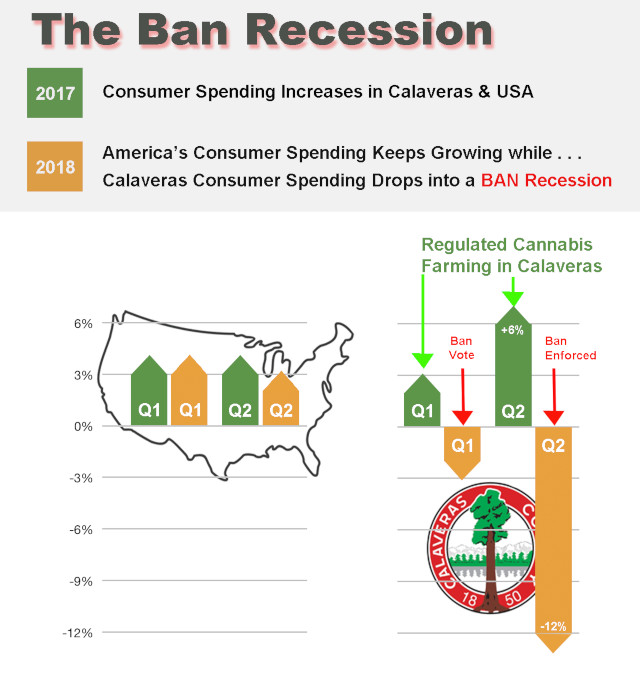San Andreas, CA…What was the effect of three Supervisors exiling 1000 workers representing 16% of the Calaveras County workforce without even a plan to replace those jobs? Except for in touristdriven downtown Murphys, exiling those missing customers spelled R-E-C-E-S-S-I-O-N throughout the county. Data available from the California Department of Tax and Fee Administration (formerly, Board of Equalization) shows a drastic drop in sales tax allocations in Calaveras County immediately following the County ban on commercial Cannabis cultivation.1

The figures below represent the quarterly sales tax figure for 2015 to the present, and displays
the percent change in each quarterly allocation over the same quarter in the previous year.
These figures provide a direct correlation to economic activity, and provide supporting data for
the University of the Pacific study that reported the local annual economic impact from Cannabis
cultivation to be about $350 million.

This CDFTA data clearly shows that when the Urgency Ordinance was in effect, Sales Tax
allocations rose in 2016, and reached stable, positive plateaus in 2017. But in 2018, with the
adoption and implementation of the ban, the bottom has fallen out. The first three quarters of
2018 all show declines, thus providing strong evidence the loss of 16% of the workforce pushed
the average Calaveras County non-cannabis retail business into a recession while consumer
spending continued to increase in United States.
Note that the 3rd quarter figure for 2018 is from data provided by the county because the CDTFA has not released
that number yet. When they do, we will update this sheet.
Anyone can verify these figures by going to:
https://www.cdtfa.ca.gov/taxes-and-fees/local-and-district-taxes.htm
To access the reports click on year and then on each quarterly report. Search for Calaveras
(which is on pages 14-15 in all the quarterly reports for 2015-2017, and on pages 12-13 in the
2018 reports). Look for the figure for Adjusted Gross in each report.



So what?
Exactly